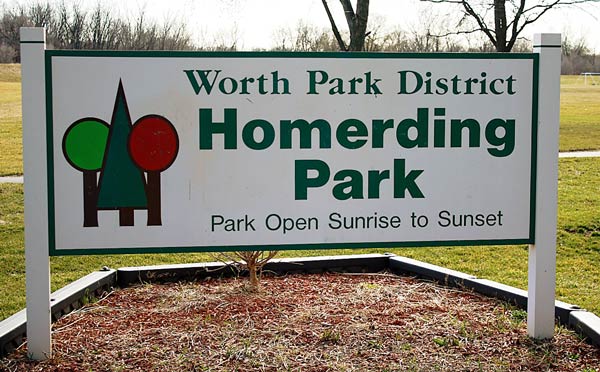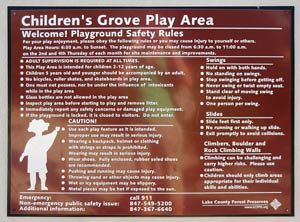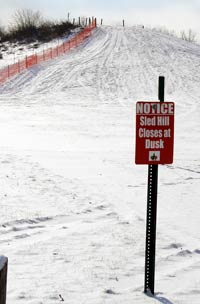 “Signs” of Successful Liability Risk Management
“Signs” of Successful Liability Risk Management
The right signage in the right place is a key tool to maximize both safety and your agency’s successful defense against a liability claim. By clearly defining hours of operation, age restrictions, equipment and supervisory requirements, and communicating key ordinances, signage provides important safety information and spells out who are “intended and permitted” users — critical to the availability and application of statutory defenses under the Tort Immunity Act.
“A PDRMA member had two playgrounds, one for children up to age 5 and the other for older kids,” recounts Eric Hohenstein, PDRMA Claims Supervisor. “The signage at the playground for younger children specifically stated the allowable ages. A teenager was injured when a swing she was using in the playground for children up to five years old broke. The signage clearly proved the teenager was not an intended or permitted user of that playground, and PDRMA successfully defended the member.”
 “At times, patrons do not use public recreation property well or wisely,” says Steve Kleinman, PDRMA General Counsel. However, from a liability perspective, Illinois law only imposes a duty for members to maintain property for intended and permitted use. “At times, patrons do not use public recreation property well or wisely,” says Steve Kleinman, PDRMA General Counsel. However, from a liability perspective, Illinois law only imposes a duty for members to maintain property for intended and permitted use.
By clearly posting signs, PDRMA members demonstrate they are concerned about the safety of patrons. “Any evidence demonstrating a conscious regard or deference for the safety of patrons can be crucial to a successful defense. And signage is compelling — if not the most important — evidence,” Kleinman adds.
Signage defines what is or isn’t intended and permitted use. Just as your speed on the highway is prescribed by the posted speed limit — whether the police officer is there to enforce it or not — so patrons are responsible for complying with posted signage even if an agency employee is not there to enforce it or observes the misuse and does not immediately act.
“If your pond signage states ‘Swimming is Prohibited,’ and a patron drowns while swimming in the pond on a hot summer day, the signage establishes the patron was not an intended or permitted user of the pond,” explains Kleinman. “Based on well-established case law, liability will not fall on the member for this tragic event. This is true even with the member’s knowledge that patrons are misusing the property.” Of course, best practices would be to enforce rules, regulations and ordinances when misuse is specifically observed. However, it is impossible to guard against and prevent all misuse of public property.
Signage can also be invaluable in warning patrons of the risks associated with a particular activity or use of public property. “Think of a pool drowning and the value of signs stating ‘parents must supervise all children under the age of 10 at all times,’ and ‘parents must be within arms’ reach’ of any child who is under the age of 6 or a non-swimmer at all times,” points out Kleinman. “Those signs demonstrate your agency has a conscious regard for the safety of others, which is important to the defense of litigation and the defense of the member’s image and reputation.”
 What is appropriate signage? What is appropriate signage?
There is, however, no one-size-fits-all approach to appropriate signage.
“Our sledding and signage issues predate becoming a PDRMA member but were always a concern,” says Sue Micklevitz, Executive Director, Lockport Township Park District; she worked with PDRMA to address safety and signage issues at Dellwood Park.
“We have two approved sledding areas, but the steepness of the hill in Dellwood Park was a concern. Our initial signage said ‘Sled at your own risk.’ PDRMA pointed out that the wording conveys the message that we know it’s dangerous, but we’re not doing anything about it.”
Micklevitz followed PDRMA’s recommendations and changed the wording of the signs. In addition, the agency is diligent about doing daily sled-hill inspections during sledding season. Staff removes any man-made jumps, makes sure signage isn’t vandalized, and documents the inspections daily and weekly. The agency also passed an ordinance prohibiting sledding except in designated areas. The ordinance, combined with the signage and inspections, demonstrates that Lockport Township Park District is doing all it can to ensure patron safety.
Members must keep in mind that ordinances have marginal value or effectiveness if not reinforced through signage and otherwise communicated in brochures, websites, Facebook pages, etc.
PDRMA Resources:
If you have questions or concerns about current signage at your facilities, ask your PDRMA Risk Management Consultant for recommendations and refer to these resources.
|

